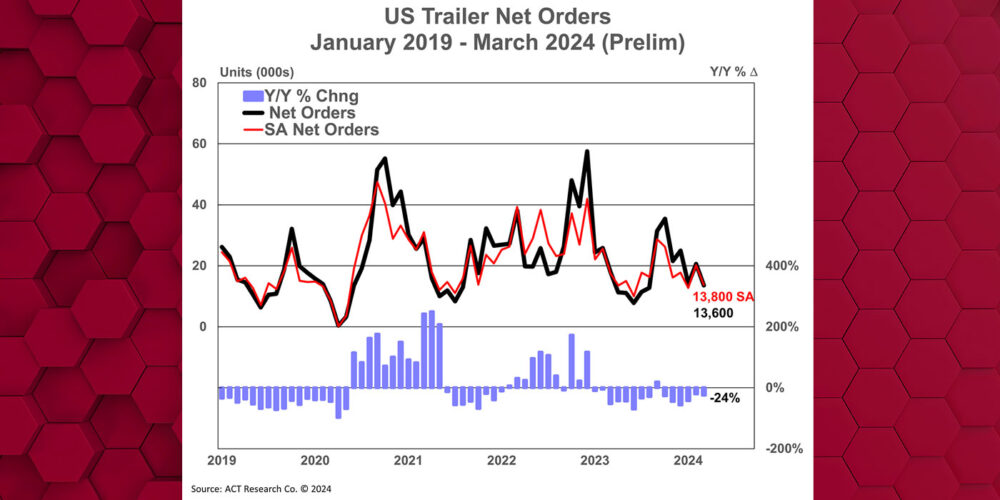Let’s talk inflation. The Fed’s efforts to maintain a 2% inflation target through adjustments in interest rates are a crucial factor influencing the broader economy. While that’s common knowledge if you’re watching economic headlines these days, Dr. Bob Dieli, economist, MacKay & Co., noted that these actions directly impact operational costs in the trucking industry, particularly in areas like fleet financing, fuel prices, and investment in new vehicles and technology.
“Tracking Class 8 sales, we use the 12-month moving sum,” Dieli said during his presentation at Heavy Duty Aftermarket Dialogue (HDAD). “I have found this helpful because I’m trying to time the business cycle. This number has turned down or made its peak somewhere between around a year ahead of the downturn (except in the pandemic, which is when everything hit the wall at the same time). Even then, the number had started to turn, and it was one of the reasons why we thought 2020 was going to be a problem. We are now five months off the last peak, and it is continuing to send down that type of signal.”
Keeping in mind that the broader economy and trucking industry closely linked, here’s an overview of what Dieli sees as the economic impact on trucking.
Cost of borrowing: When the Fed raises interest rates to combat high inflation, borrowing costs increase. For the trucking industry, this means higher expenses for financing fleet expansion or renewal, which can lead to delayed or reduced investment in new vehicles and technology.
Consumer spending and demand: Higher interest rates generally lead to reduced consumer spending, as loans for homes, cars, and other large purchases become more expensive. A decrease in consumer spending can reduce the demand for transported goods, impacting freight volumes.
Fuel prices and operational costs: Although the Fed’s policies don’t directly set fuel prices, their decisions can influence them indirectly. For instance, higher interest rates can strengthen the dollar, potentially making oil, which is priced in dollars, more expensive in other currencies. This can affect global oil prices and, consequently, fuel costs for the trucking industry.
Inflationary pressures on costs: High inflation can increase the cost of vehicle maintenance and parts, as well as other operational expenses like insurance and labor. Managing these costs effectively becomes a key challenge for fleet managers.
The ‘booming’ business cycle
A “booming” business cycle doesn’t mean stability. Quite the opposite.
“What are the characteristics of the boom phase? Two things. First, instability,” Dieli said. “There are reports from around our industry and the economy about conditions being unstable and somewhat unpredictable. The second, to use a technical term, the Fed is in a bad mood and as long as the Fed’s in a bad mood, we are going to have problems.”
Instability during the boom phase can manifest as fluctuating demand, unpredictable fuel prices, and varying freight rates. This unpredictability makes it challenging for trucking companies to plan and maintain consistent profitability. Additionally, a boom can mean that the demand for fleet operations may increase, leading to more wear and tear on vehicles and a higher demand for aftermarket parts. Of course, supply chain disruptions and inflation can affect the availability and cost of these parts.
All this is to say that there’s a direct link between economic conditions and the markets in which you run your trucks.
“Prior to the pandemic there was a slight upward trend and then after the pandemic freight rates took off; a year ago we were talking about how difficult it was to get a truck and how much it costs to get a truck, and not so much now,” Dieli said. “Putting this in terms of inflation, which is the rate of change of prices over time, at one point freight rates were rising about 24%. Now they are falling at about a 10% rate. The term ‘chasing freight’ has been heard, and from what we see in our monitors, we think that process is going to be in place for a while.”
Watch the video above for expanded comments from Dieli.













